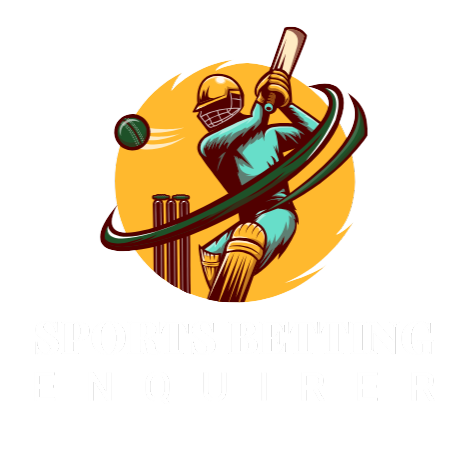When it comes to golf, the game itself is as much about precision and patience as it is about understanding the language that surrounds it. For newcomers eager to dive into the world of golf sports betting, the terminology can often feel like navigating a course filled with unfamiliar hazards. From the first tee to the final putt, knowing the right “tee off terms” can transform your betting experience from guesswork into strategy. This guide unpacks the essential lingo behind golf betting, helping you speak the sport’s language with confidence and making every wager a well-informed play. Whether you’re a casual fan or a budding enthusiast, get ready to master the words that drive the game.
Understanding the Basics of Golf Betting Terminology
Understanding how odds are presented is equally crucial. Golf betting odds commonly appear in decimal or fractional formats, and knowing how to convert between formats can make a meaningful difference in evaluating risk and reward. Additionally, golf betting uniquely incorporates scores and player statistics, which influence betting markets beyond just picking the outright winner. To better visualize this, here’s a breakdown of some common terms and what they represent:
| Term | Meaning | Example |
|---|---|---|
| Cut | Determining which players continue after initial rounds | Betting on a player to “make the cut” |
| Leaderboard | Ranking of players based on current tournament scores | Wagering on a player to be in the top 10 |
| Stroke Play | Scoring format counting total strokes over rounds | Betting on the lowest overall score |
Beyond terminology, it’s important to appreciate the dynamic nature of golf betting markets. Player performance can fluctuate dramatically due to course conditions, weather, and psychological factors, all of which influence the odds in real time.Being familiar with these foundational terms allows bettors to better interpret how these variables affect wagers, making for smarter and more strategic bets. Keep these key concepts in your toolkit, and you’ll find the game of golf betting as rewarding as the sport itself.
Breaking Down Popular Bet Types in Golf Wagering
For those who like a bit more complexity, prop bets offer unique opportunities-such as wagering on specific player achievements, like who will birdie a certain hole or the number of eagles in a round. Another favorite is the folding bet, common in match play formats, where your wager continues only if your chosen player advances. It adds a thrilling layer of strategy to your betting approach.
| Bet Type | Description | Risk Level |
|---|---|---|
| Straight | Pick the outright winner or head-to-head player | Low |
| Futures | Bet on outcomes before the event concludes | Medium |
| Prop Bets | Bets on specific player or game occurrences | Varies |
| Folding | Bet continues only if selected player advances | High |
Key Player Performance Metrics Every Bettor Should Know
Other key stats focus on consistency and form,including fairways hit percentage and greens in regulation (GIR). Fairways hit measures a player’s precision off the tee, while GIR tracks how often a golfer reaches the green in the expected number of strokes. Players boasting high percentages here tend to navigate courses more effectively, which often translates into lower scores. These numbers help highlight steady performers versus volatile players who might make impressive shots but also costly mistakes.
| Metric | What It Measures | Why It Matters |
|---|---|---|
| Strokes Gained | Performance relative to the field on specific shots | Identifies areas where a player gains or loses ground |
| Driving Accuracy | % of fairways hit off the tee | Shows consistency in starting holes favorably |
| Putting Average | Average number of putts per hole | Highlights efficiency on the green, crucial for scoring |
| Greens in Regulation (GIR) | % of holes where the green is hit in regulation strokes | Measures ability to create birdie or par opportunities |
Strategies for Applying Golf Lingo to Smarter Bets
Another powerful approach is interpreting phrases that convey player consistency and momentum. When a commentary mentions a golfer “finding their rhythm” or “struggling with their short game,” these signals can inform live betting decisions, where odds shift rapidly based on momentum.Staying alert to this terminology means your bets can adapt in real-time-putting money down when a player is “in the zone” or holding off when they’re “in the rough.”
To streamline your strategy, here’s a quick reference table linking key golf terms with practical betting ideas:
| Golf Term | Meaning for Betting | Bet Type Example |
|---|---|---|
| Birdie | Score one stroke under par on a hole | Most birdies in round |
| Cut | Player’s score needed to continue playing after initial rounds | Will player make the cut? |
| Fairway | Main area of the course between tee box and green | Percentage of fairways hit |
| Eagle | Two strokes under par on a hole | Player to score an eagle |
Using this lingo as a lens to assess stats and commentary can unlock smarter, more nuanced wagers. By weaving golf terminology into your betting vocabulary, you transform raw data into informed insights-elevating your approach beyond guesswork to strategy-driven decisions.
Tips for Navigating Live Betting During Golf Tournaments
In the fast-paced world of live golf betting, staying ahead means understanding how momentum can swing with each hole. Keep an eye on player form and current hole conditions, as a sudden wind shift or a tricky green can drastically affect outcomes. Unlike pre-tournament wagers, live bets require you to absorb real-time data and react quickly. Look for betting markets that update dynamically – odds can change rapidly, reflecting players’ fluctuating performances and external factors like weather or crowd influence.
Mastering live betting also means knowing when to hold back and when to dive in.Patience is vital; avoid chasing losses after a bad shot or hole, which is common in the high-pressure flow of golf. Rather,assess the player’s ability to recover,especially if they excel under pressure on key holes like par 3s or the back nine.Use incremental stakes to minimize risk-small bets on underdog moments can frequently enough deliver better value as the tournament unfolds.
| Key Live Betting Tips | Why It Matters |
|---|---|
| Track Tournament Leaderboard | Ensures informed decisions based on real-time scores and player status. |
| Monitor Weather & Course Changes | Adapts bets to external factors affecting gameplay dynamics. |
| Utilize Micro-Bets | Capitalizes on short-term opportunities with lower risk exposure. |
| Focus on Player Momentum | Identifies shifts in confidence that impact subsequent holes. |
Q&A
Q&A: Tee Off Terms – Your Guide to Golf Sports Betting Lingo
Q1: What exactly is golf sports betting?
A: Golf sports betting involves placing wagers on various outcomes related to professional golf tournaments. Unlike other sports, golf betting offers diverse markets-such as predicting the outright winner, top finishers, head-to-head matchups, or even prop bets like the number of birdies a player will make.
Q2: Why should I learn golf betting terminology?
A: Understanding the lingo is key to making informed bets and truly appreciating the nuances of the game and the betting landscape. It helps you navigate betting sites, understand odds, and communicate with other golf fans without confusion.
Q3: What does “par” mean in golf betting terms?
A: In golf, “par” refers to the expected number of strokes a skilled golfer should take to complete a hole or course. In betting, you might encounter phrases like “beating the par” on props related to player performance or course scores.
Q4: What is a “futures bet” in golf?
A: A futures bet is a wager placed well before the tournament begins, typically on who will win the event or finish within a certain position. Since odds can shift as the tournament approaches, futures bets carry both risk and prospect.
Q5: Can you explain “each-way bet”?
A: An each-way bet is essentially two bets: one on a player to win, and one on the same player to finish in a select range of positions (usually top 5 or top 10). It’s a popular way to hedge risks, as you get partial payout even if your pick doesn’t win outright but places.
Q6: What does “head-to-head” mean in golf betting?
A: Head-to-head wagering pits two golfers against each other. Instead of betting on who wins the tournament, you wager on which one outperforms the other by the end of the event.
Q7: What are “props” or proposition bets?
A: Props are side bets on specific occurrences during the tournament-like the total number of birdies a player will make,if a hole-in-one will occur,or whether a player will make the cut. They add extra excitement beyond standard bets.
Q8: How do “the cut” and “making the cut” affect golf betting?
A: The cut is a score threshold after the first two rounds that determines which players continue playing in the final rounds. Bets on whether a player will “make the cut” are common, influencing winnings and strategy.
Q9: What’s the significance of odds formats in golf betting?
A: Odds can be displayed in decimal, fractional, or American formats. Each shows the potential payout differently, so understanding these is critical to interpreting your betting returns correctly.
Q10: Any tips for newcomers to golf sports betting?
A: Start by learning basic golf rules and terms, research players’ recent form and course history, and experiment with small bets. Also, keep an eye on weather and course conditions-they can hugely impact outcomes. And remember, betting should be fun and responsible.
This Q&A offers a bird’s-eye view of essential golf betting terminology to help you tee off confidently in the exciting world of golf wagering.
Insights and Conclusions
As you step off the green and close the chapter on these tee off terms, remember that mastering the language of golf betting is just as crucial as understanding the game itself. With every par, birdie, and eagle you now recognize beyond the fairway, you’re better equipped to navigate the exciting world of sports betting.Whether you’re a seasoned bettor or a curious newcomer, this lexicon tees you up for smarter wagers and richer conversations. So keep your eye on the ball-and the odds-and may your next bet swing true.




